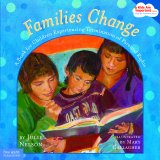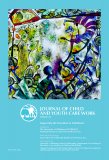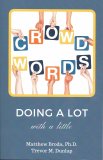Resources for Child and Youth Care Providers
- 1
- 2
-
The Complete Guide to Service Learning is the go-to resource in the fast-growing field of service learning. It is an award-winning treasury of service activities, community service project ideas, quotes, reflections, and resources that can help teachers and youth workers engage young hearts and minds in reaching out and giving back. This is an excellent resource for the classroom, out-of-school time, youth-serving organizations, or as a family.
-
This strengths and competency-based curriculum includes a strong youth development philosophy and current best practice components.
-
“Implementing the ideas in Connecting Children to Nature: Ideas and Activities for Parents and Educators will go a long way toward creating a nature-rich future.”
—Richard Louv, author of Last Child in the Woods and The Nature Principle, Chairman Emeritus of the Children & Nature Network -
Howard Gardner’s theory of multiple intelligences has revolutionized the way we think about being smart. Written by an award-winning expert on the topic, this book introduces the theory, explains the different types of intelligences (like Word Smart, Self Smart, Body Smart), and helps kids identify their own learning strengths and use their special skills at school, at home, and in life. As kids read the book, they stop asking “How smart am I?” and start asking “How am I smart?”
-
Every teen can be a leader. That’s because leadership is not just about taking the lead in big ways, but in everyday small things, too. The twenty-one sessions in this youth leadership curriculum guide teens to explore ethical decision-making, team-building, what it means to be a leader, how to work with others, risk-taking, communication, creative thinking, and more. Choose the sessions that seem best for your class or group, or explore leadership skills through an entire school year. Includes reproducibles, the Everyday Leadership Skills & Attitudes Inventory (a student inventory of leadership skills and attitudes), evaluation tools, and exams. Requires use of the student book Everyday Leadership.
-
Leadership is not just about taking the lead in big ways, but in everyday things, too. Written and experiential activities help teens discover their own leadership potential and develop skills that guide them to act responsibly and make a difference in the world around them. A Facilitator's Guide is also available on this topic.
-
Designed for youth 4-12. All families change over time. Sometimes a child gets a new foster parent or a new adopted mom or dad. They need to understand they can remember and value their birth family and love their new family, too.
-
Teach social skills and enrich classrooms to reduce problem behaviors and nurture growth.
-
Develop and strengthen essential emotional intelligence skills in adolescents with this practical, hands-on resource.
-
Like A Future Near Me, but written specifically for American Indian youth, this pocket workbook asks 100 questions the answers to which can guide Indian youth through two worlds: their tribal community and the larger society.
-
A pocket workbook for youth who are thinking about moving out on their own. It includes 100 questions to guide a young adult toward self-sufficiency. It can be used by individuals or groups to stimulate discussion.
-
A pocket workbook for youth who are thinking about moving out on their own. It includes 100 questions to help youth and young adults think seriously about the practical realities of moving out for the first time. This booklet can be used by youth who are self-motivated to think ahead or by a parent or mentor who cares about the well-being of a youth in transition to adulthood.
-
Proceedings of Beyond Borders: Eighth International Child and Youth Care Conference.
-
-
Professional Child and Youth Care Practice: Five Domains of Competence
-
Residential Child and Youth Care Work: Trauma Informed Practice
-
This classic intervention program is designed to teach adolescents to understand and replace aggression and antisocial behavior with positive alternatives.
This book is a revision of an earlier edition with the three original authors: Arnold P. Goldstein (1933-2002), Barry Glick, and John C. Gibbs.
-
This evidence-based bestseller employs a four-part training approach (modeling, role-playing, performance feedback, and generalization) to teach essential pro-social skills to adolescents. This books provides a complete description of the Skillstreaming program, with instructions for teaching 50 pro-social skills.
-
Create positive change in your most challenging students with the help of proven, practical strategies found in this resource.
-
Many times, it is the simplest of ideas that have the most profound impact...
Writen by Dr. Matthew Broda and Trevor M. Dunlap, this refreshingly simple activity book can be used as a collection of fun and engaging activities to foster deep collaboration and engagement. All the activities use a simple alphabet deck and are organized into four core interactions: Introductions, Cooperative, Collaborative, and Reflective.
-
In our digital era, young people need a safe, supportive place to connect and “just talk” with caring peers and an attentive adult. With more inclusive language, new discussion topics about social media, and a revised introduction, this updated edition of How (and Why) to Get Students Talking addresses the unique issues faced by today’s middle and high school students. Through guided group discussions, young people gain self-awareness, build important verbal communication skills, cope with difficult emotions, practice problem-solving, and more.
- 1
- 2























